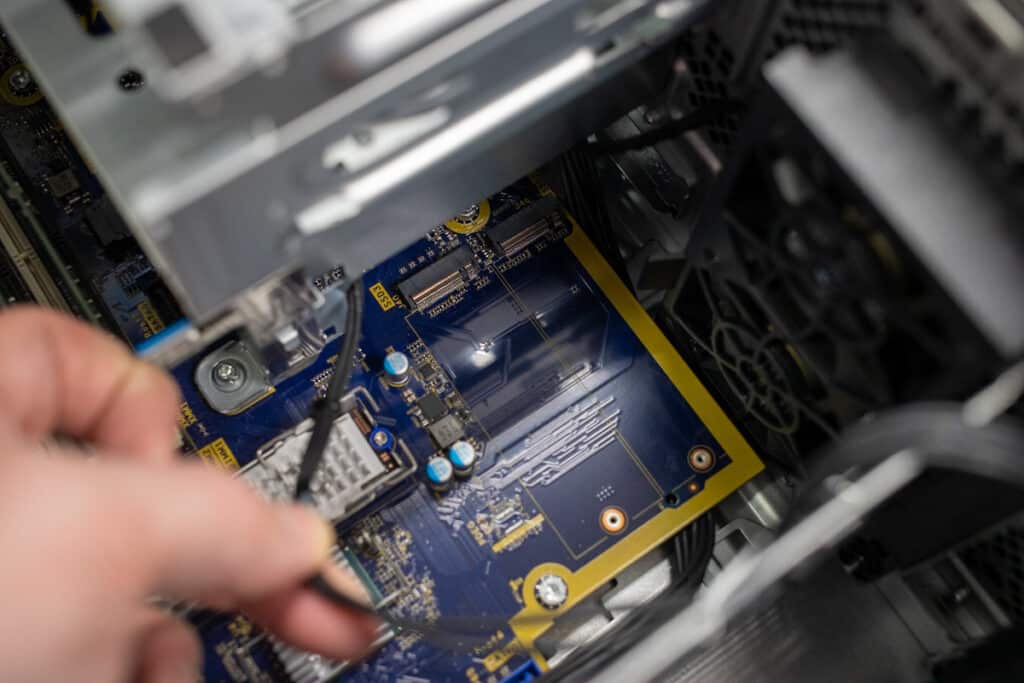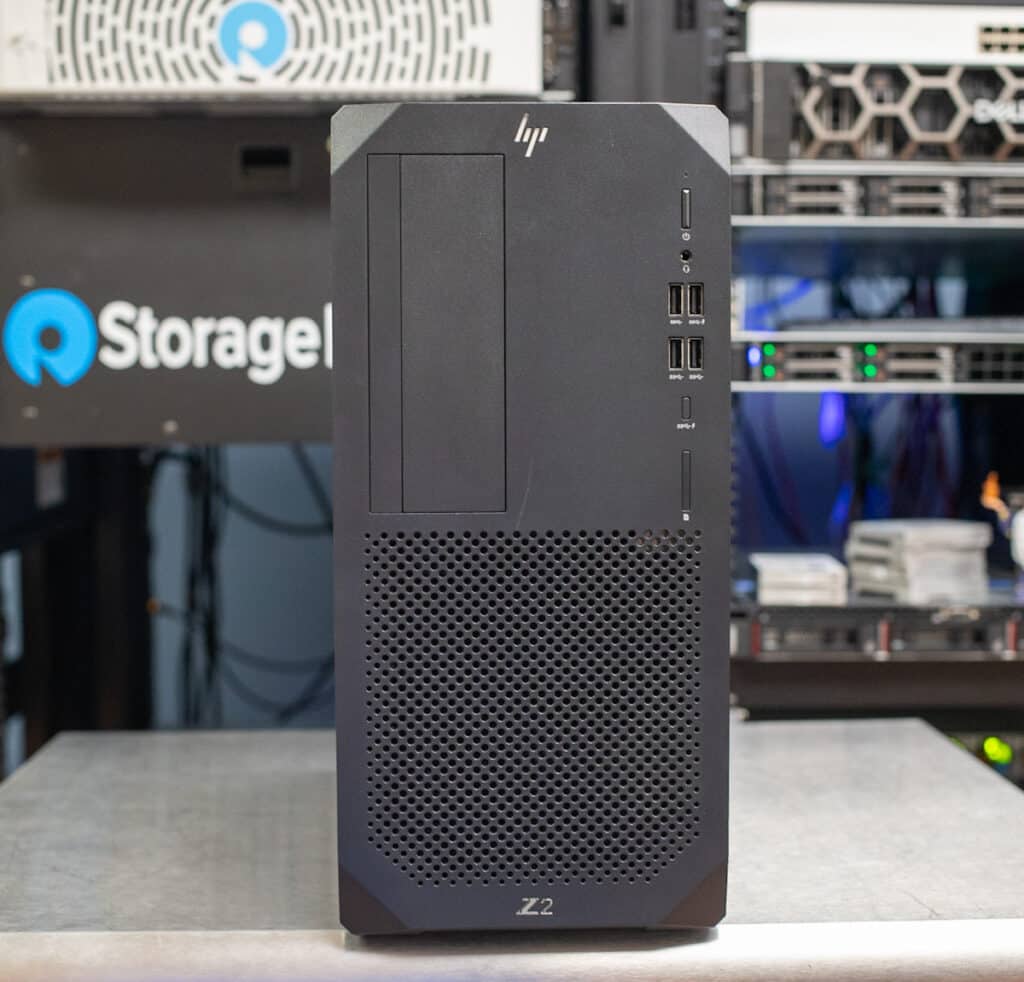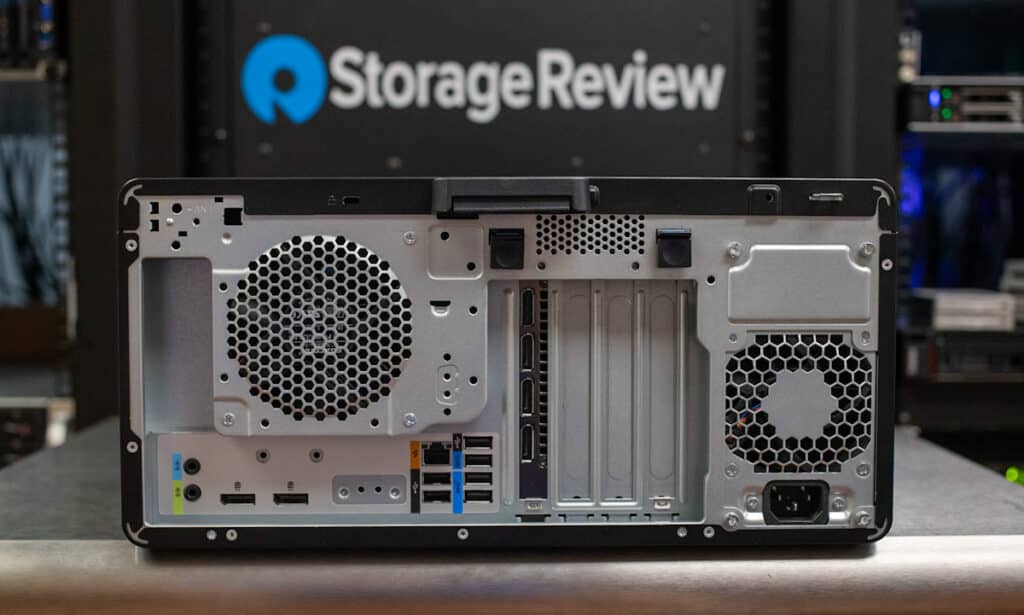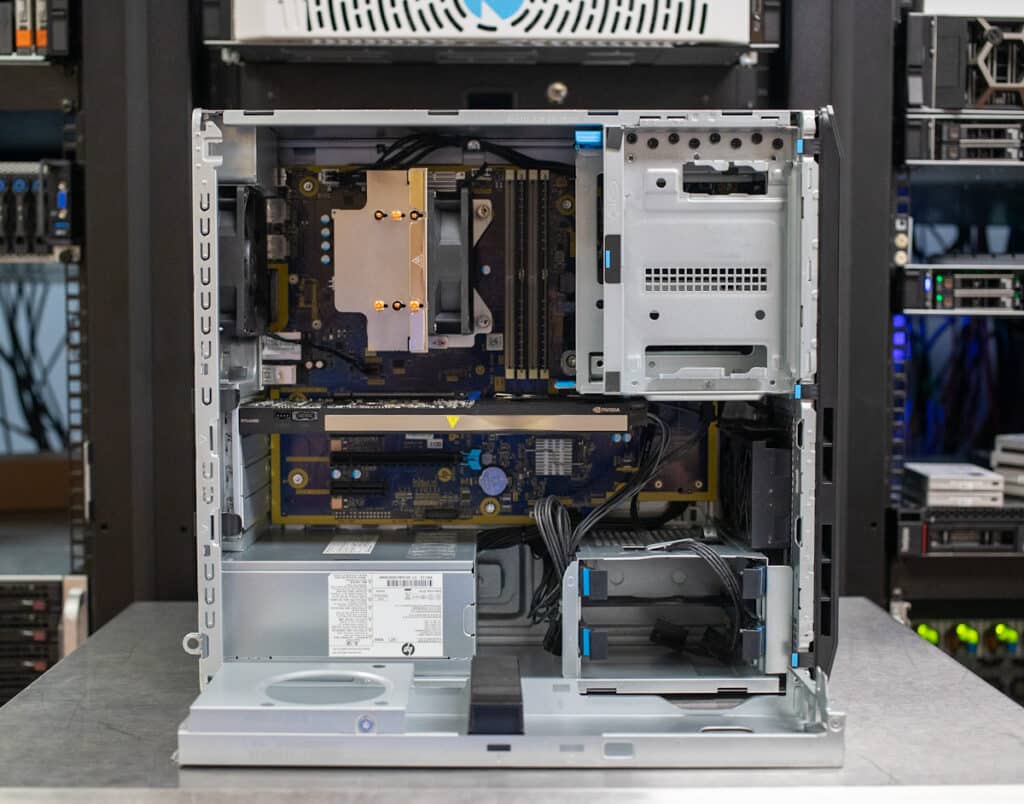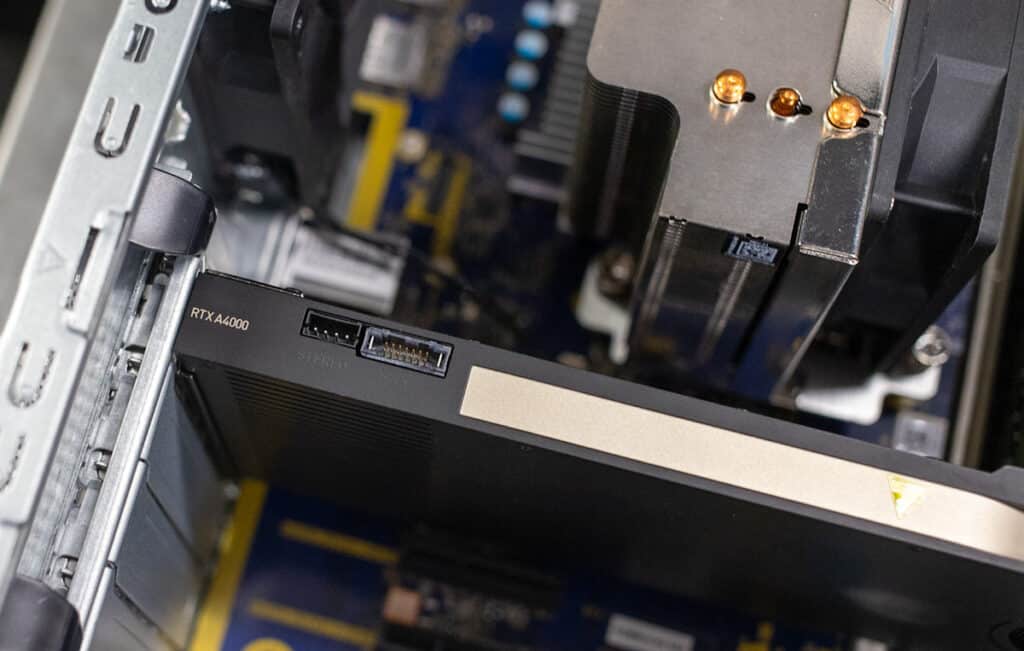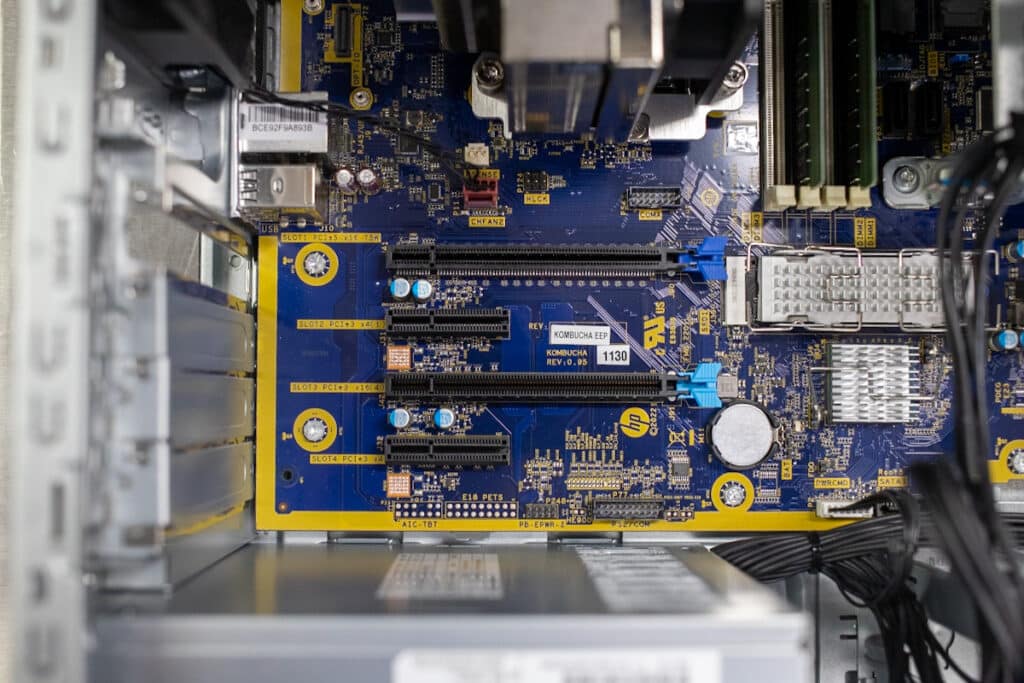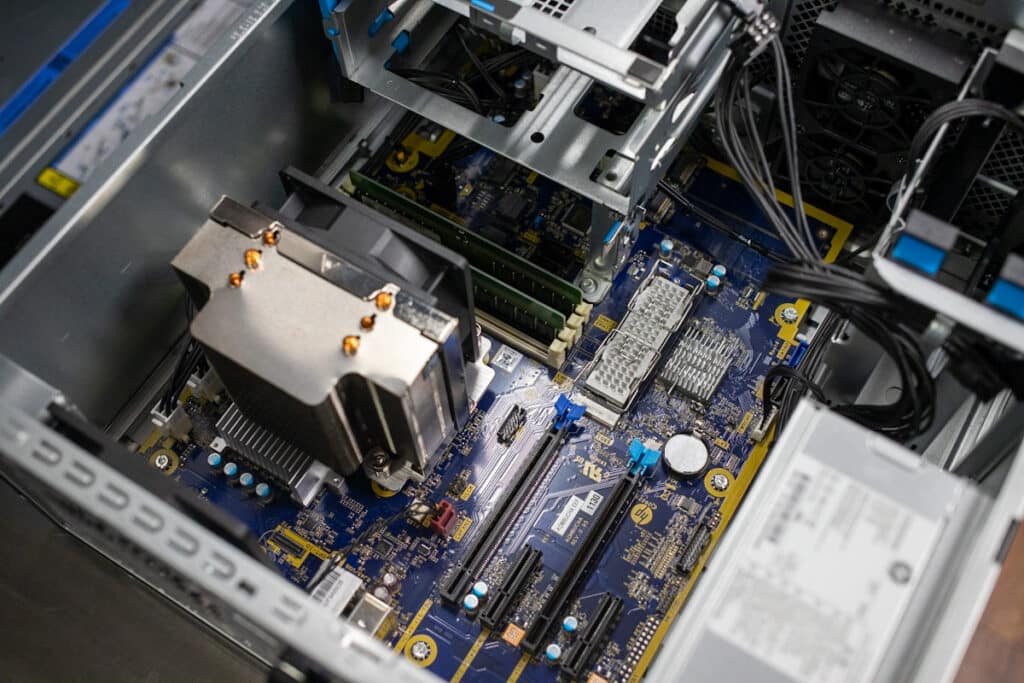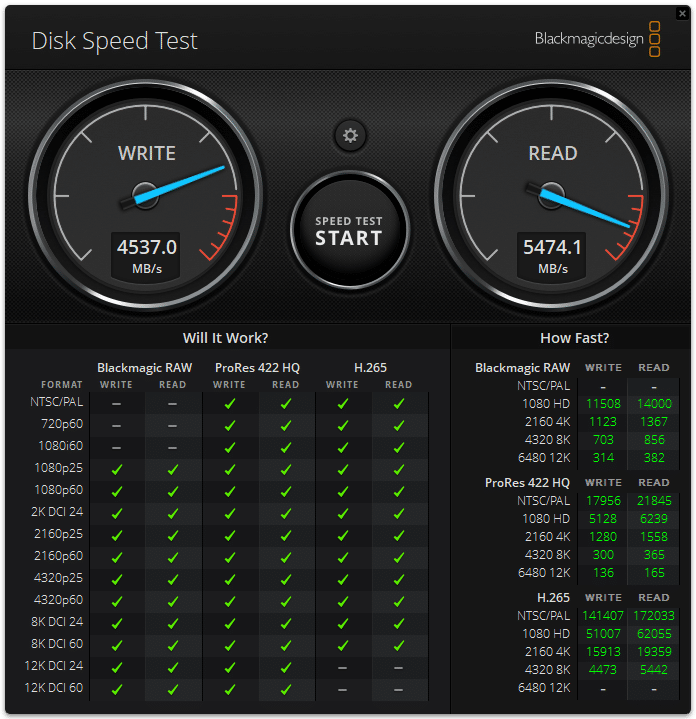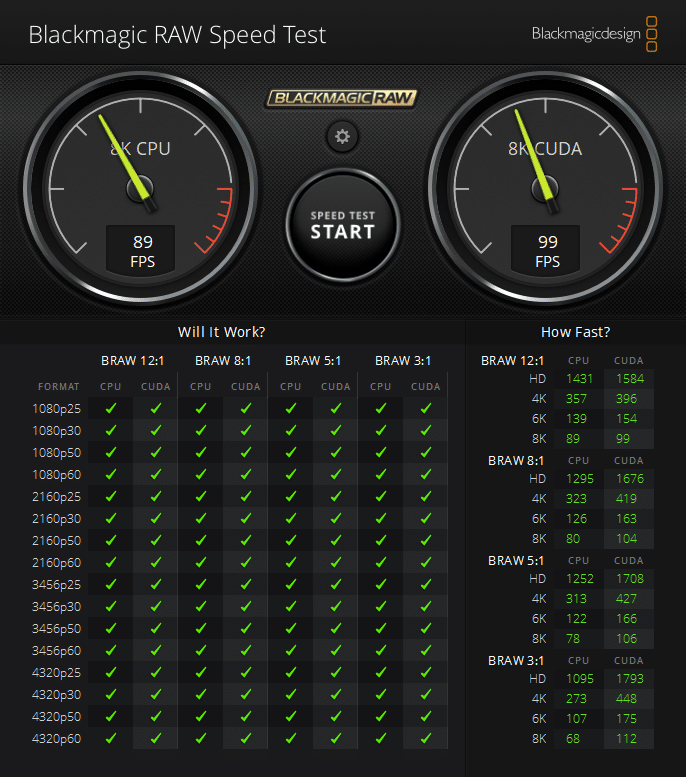The HP Z2 Tower G9 is the company’s next generation of performance-driven desktop workstations, featuring a range of different configurations and customizability to suit pretty much any need. It supports full-sized AMD and NVIDIA RTX video cards, and 12th-gen Intel “Alder Lake” Core K-series processors, making it a great choice for those who have the space to fit a powerful mid-sized tower rig in their work area.
The HP Z2 Tower G9 is the company’s next generation of performance-driven desktop workstations, featuring a range of different configurations and customizability to suit pretty much any need. It supports full-sized AMD and NVIDIA RTX video cards, and 12th-gen Intel “Alder Lake” Core K-series processors, making it a great choice for those who have the space to fit a powerful mid-sized tower rig in their work area.
Like its predecessor, the Z2 Tower G9 is geared more toward business and professional users in the rendering, video editing, and scientific simulation fields as well as for users who are willing to open up their wallets a bit to build a powerful and reliable computer with some top-of-the-line hardware and features.
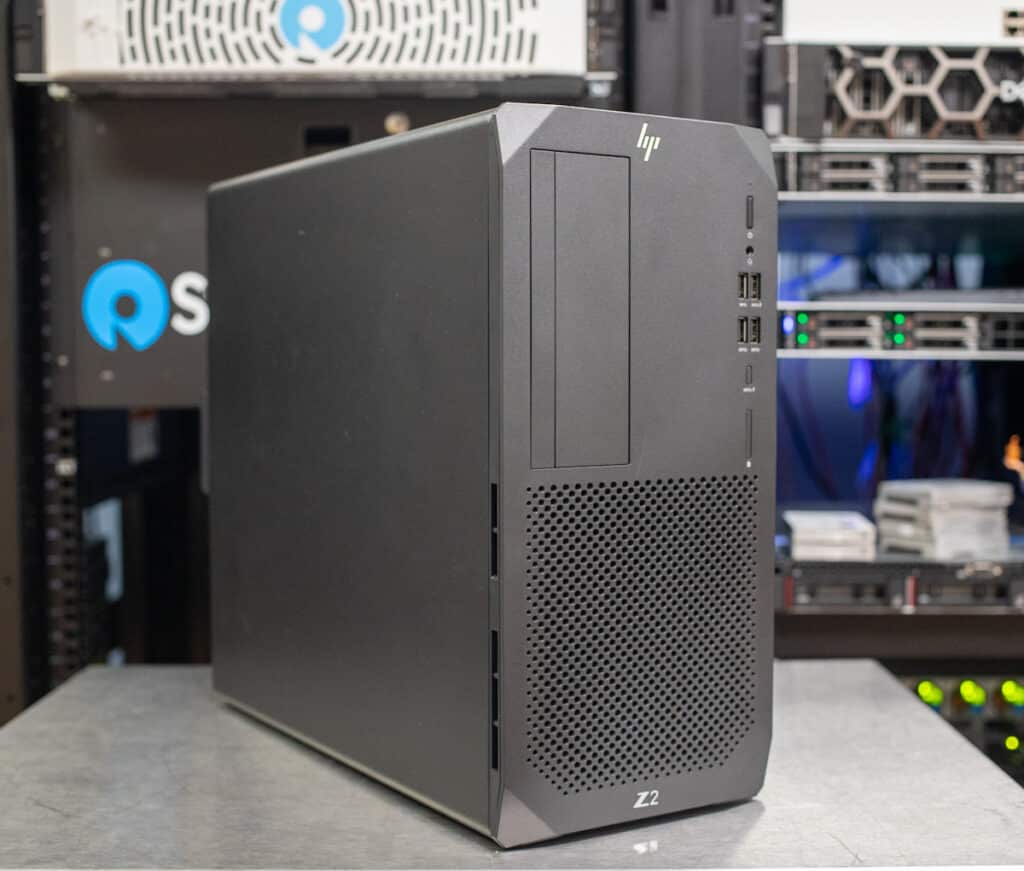
The Z2 Tower G9 is the direct successor to the Z2 Tower G8 and improves on it in some very important ways. The move to the 12-gen processors is probably the biggest change. Users have the option of equipping the G9 with a lower-end i3-12100 (3.3 GHz, up to 4.3 GHz w/Boost, 12 MB cache, 4 core) all the way to an i9-12900K processor (3.2 GHz, up to 5.2 GHz w/Boost, 30 MB cache, 16 core, 125W) for those who have the funds. It also has eight other choices in between, so you can certainly find the right price/performance range for your budget.
Another significant improvement is RAM, as G9 now uses DDR5 (whereas the G8 leveraged DDR4). While users can top out their rig at 128GB (4 x 32 GB) 4800hz UDIMM, those who need to go the more economical route (or don’t require as much for their use case) can go as low as 8GB. DDR5 is a significant upgrade over its predecessor, as it has a much higher base speed (by 50%), is more energy efficient, and supports more memory modules than DDR4. This means potential for a much more power-efficient and performance-drive Z2 Tower series.
Users have a range of NVIDIA and AMD professional graphics cards to use in their builds as well. The entry-level GPU option is the NVIDIA T400 (your choice of either the 2GB or 4GB GDDR6 model), which features 384 CUDA cores and the PCIe Gen3 x16 interface. Mid-range options include the AMD Radeon Pro W6600 (8GB GDDR6), an NVIDIA T1000 (both 4GB and 8GB models), and an NVIDIA RTX A2000 12GB.
Those with a relatively higher budget have some pretty good high-end GPUs to choose from, including an AMD Radeon Pro W6800, a 32GB GDDR6 card that leverages the AMD RDNA 2 architecture and 35.66 TFLOPs, and an NVIDIA RTX A5000, a 24GB GDDR6 card designed for designers, engineers, and artists with intensive use cases. Other high-end options include an NVIDIA RTX A4000 (16GB) and an AMD Radeon RX 6700 XT (12GB).
Our build includes an i7-12900K processor (one of the top processor options), 64GB of DDR5 RAM, the NVIDIA RTX A4000, and a 1TB Z Turbo PCIe Gen4 M.2 SSD. This is a higher-end configuration and will cost you just under $2,000.
HP Z2 Tower G9 Specifications
| Available Operating Systems |
|
| Available Processors |
|
| Maximum memory |
|
| Memory slots | 4 DIMM |
| Internal storage |
|
| Optical drive | HP Slim DVD-ROM; HP Slim DVD-Writer |
| Available Graphics |
|
| Audio | Realtek ALC3205-VA2-CG, 2.0W internal mono speaker |
| Expansion slots | 1 PCIe 3 x4 (x16 connector); 1 PCIe 3 x4 (x4 connector); 1 PCIe 3 x1 (x4 connector); 1 PCIe 5 x16 (x16 connector); 1 M.2 2230 PCIe 3 X1 for WLAN (1 M.2 2230 slot for WLAN and 3 M.2 2280 slots for storage) |
| Ports and Connectors |
|
| Input devices | HP Wired Desktop 320K keyboard; HP Wired Desktop 320MK Mouse and Keyboard; HP 125 Wired Keyboard; HP 655 Wireless Keyboard and mouse combo; HP 975 Wireless Keyboard; HP 455 Programmable Wireless Keyboard; HP Wired Desktop 320M mouse; HP wired desktop 128 laser mouse; HP 125 Wired Mouse; HP Creator 935 Black Wireless Mouse |
| Communications | LAN: Integrated Intel I219-LM GbE; Intel I350-T2 dual-port GbE NIC; Intel I225-LM 2.5 GbE LOM, non-vPro; Intel Ethernet Network Adapter I225-T1; Intel X550-T2 dual-port 10GbE NIC; NVIDIA Mellanox ConnectX-6 DX Dual Port 10/25GbE SFP28 NIC; NVIDIA Mellanox 25GbE SFP28 SR Transceiver; NVIDIA Mellanox 25GbE SFP28 2nd SR Transceiver; NVIDIA Mellanox 10GbE SFP+ SR Transceiver; NVIDIA Mellanox 10GbE SFP+ 2nd SR Transceiver ; WLAN: Intel Wi-Fi 6e AX211 and Bluetooth 5.2 combo with external antenna; Intel Wi-Fi 6 AX211 and Bluetooth 5.2 combo with internal antenna |
| Drive Bays | One slim ODD; One 5.25″ ODD; One 2.5″ HDD; Two 3.5″ HDD; Three M.2 NVME 2280 SSD |
| Software | HP PC Hardware Diagnostics UEFI; HP Support Assistant; HP PC Hardware Diagnostics Windows; ZCentral Remote Boost; HP Image Assistant; HP Manageability Integration Kit; Performance Advisor 3.0 |
| Security management | HP Secure Erase; HP Sure Click; HP BIOSphere Gen6; HP Sure Admin; Hood Sensor Optional Kit; HP Client Security Manager Gen6; HP Sure Start Gen7; HP Sure Recover Gen4; HP Sure Sense Gen2; HP Sure Run Gen5 |
| Security Software Licenses | HP Wolf Pro Security Edition |
| Management features | HP Driver Packs; HP Management Integration Kit for Microsoft System Center Configuration Management Gen4; HP System Software Manager (download); HP BIOS Configuration Utility (download) |
| Power | 350 W 92% efficient, wide-ranging, active PFC; 700 W 92% efficient, wide-ranging, active PFC; 500 W 90% efficient, wide-ranging, active PFC; 450 W 90% efficient, wide-ranging, active PFC |
| Dimensions | 14 x 6.7 x 15.2 in; 35.6 x 16.9 x 38.5 cm; (Standard tower orientation.) |
| Weight | Starting at 16 lb; Starting at 7.2 kg; (Exact weight depends on configuration.) |
HP Anyware
Like all Z systems, the HP Z2 Tower G9 supports HP Anyware (previously called ZCentral Remote Boost). This free remote access and collaboration application gives secured access to digital workspaces without the need for a VPN. Though the complexity of getting HP Anyware up and running varies on use cases, the service is specifically designed to be easy to set up and use. Essentially, HP Anyware is a cloud-based service that enables users to access their software, data, and resources from pretty much any device (that has an internet connection), from anywhere, and at any time.
As a result, HP Anyware can add a lot of value due to its highly responsive, color-accurate, and lossless experience. We certainly found it to be a convenient and secure way to work remotely, collaborate with colleagues, and stay productive while on the go.
HP Z2 Tower G9 Design and Build
As the product name indicates, the new HP Z2 G9 is of the tower form factor at 14 x 6.7 x 15.2 inches in size and weighing in at roughly 16 lbs (though it will get heavier as you add bigger and better components). It looks identical to the last-gen G8 model, which we found to be a well-built system (as is the case with all Z series workstations).
Nonetheless, the front panel is home to four USB-C 3.2 (10Gps) ports, one of which supports charging up to 5V/2.1A, a power button, an audio jack, an optional SD card reader, and the Slim ODD and external 2.5” drive bays. The bottom half of the front panel is the ventilation grill.
On the rear side is the audio line-in/out jacks, dual DisplayPort 1.4 ports, the flex I/O module (connectors will depend on your build), six USB-A ports (2x 480Mbps, 2x 10Gbps, 1x 5Gbps), the RJ-45 network port, the PCIe expansion slots, system fan, and power connector.
To see what’s under the hood, simply pull the release latch (the plastic piece as seen on the top of the back panel in the image above), slide the side panel back, and lift. It should easily slide off, which makes maintenance and upgrading pretty seamless. The front bezel can also be quickly removed by simply lifting the three tabs that secure it in place and rotating the top downward.
Like all Z workstations, the Z2 Tower G9 is nicely designed with lots of room to maneuver and breathe (especially for a mid-tower form factor).
Next to the processor are four UDIMM slots; the Z2 G9 Tower tops out at 128GB of memory like the previous generation, including nECC options. Our Core-based unit has two 32GB DDR5-4800 nECC modules for 64GB total.
Our review rig features the RTX A4000 graphics card, which is one of the higher-end supported models and is the most expensive component of our build (alongside 128GB of RAM if you go that route). If you want to get the best possible performance, you can upgrade to the RTX A5000 or AMD Radeon Pro W6800, which go for roughly $3,300 and $2,800 respectively.
Power supplies range from 350W to 700W, the latter of which we are using for this review build. This is the same range as the last-gen G8 model, though users have a 450W option this time around.
Here is a quick rundown of the NVIDIA RTX A4000 specifications:
| GPU Memory | 16GB GDDR6 with error-correction code (ECC) |
| Display Ports | 4x DisplayPort 1.4 |
| Max Power Consumption | 140 W |
| Graphics Bus | PCI Express Gen 4 x 16 |
| Form Factor | 4.4” (H) x 9.5” (L) Single Slot |
| Thermal | Active |
| VR Ready | Yes |
The Z2 Tower G9 is outfitted with four PCIe slots: PCIe Gen5 x16, PCIe Gen3 x1 (with x4 Connector), PCIe Gen3 x4 (with x16 Connector) and a PCIe Gen3 x4.
In the center of the image below, you can see the first M.2 slot where we have the 1TB Z Turbo Gen4 SSD installed (with a heat sink). The two other onboard M.2 slots are located just above this slot, allowing you to have a total of 8TB (of HP storage, you can go higher with non-HP SSDs). If you need more PCIe NVMe M.2 drive storage, an adapter must be installed to host additional M.2 drives. All of them are easily accessible, which makes it easy to swap out drives if needed.
For those who need additional storage of their cold data (e.g., for backup), the Z2 G9 Tower supports up to three 3.5-inch and one 2.5-inch drive.
HP Z2 Tower G9 Performance
The HP Z2 SFF G9 we’re testing has the following specifications:
- Windows 11 Pro
- i9-12900K processor (3.2 GHz, up to 5.2 GHz w/Boost, 30 MB cache, 16 core, 125W)
- 64GB DDR5-4800 dual-channel RAM (2x 32GB)
- 16GB Nvidia RTX A4000 graphics card
- 1TB Z Turbo Gen4 SSD
- 700-watt power supply
This configuration is pretty much the same as the SSF version we previously reviewed, meaning it’s a well-balanced configuration that is ideal for most design work. Like the Z2 SSF G9, it comes equipped with the Core i7-12700K, which runs cooler than the Core i9 iteration.
Because of its higher power limit, the K-series chip is known to be much better for long-running tasks that continuously stress the CPU. As such, this will allow for longer sustained higher clocks. For any other tasks or benchmarks, performance will be similar to non-K series CPUs.
Generally speaking, the K-series offer high levels of performance for demanding workloads, featuring fast clock speeds, multiple cores, and support for advanced technologies such as Hyper-Threading and Turbo Boost. This makes them ideal for tasks that require a lot of processing power, like gaming, video editing, and 3D rendering
Nonetheless, we will also be comparing the HP Z2 Tower G8 to show the jump in performance between the two generations. Here is what’s under the hood:
- Windows 10 Pro
- Intel Core i7-11700 eight-core CPU (2.5GHz base, 4.9GHz Turbo, 65-watt TDP)
- 32GB DDR4-3200 dual-channel RAM (2x 16GB)
- 1TB PCIe Gen4 NVMe M.2 SSD (Samsung PM9A1)
- Nvidia RTX A4000 (16GB GDDR6 ECC)
- 700-watt power supply
Of note is the 11-gen Intel processor and DDR4 RAM, though it does have the same NVIDIA card as the two G9 workstations.
Disk Speed Test
First up is the Blackmagic Disk Speed Test. Here, the 1TB Z Turbo SSD was able to hit a solid 4,537MB/s write and 5,474MB/s read when inside the Z2 Tower G9.
The Blackmagic RAW Speed Test is a tool that measures how fast a workstation can decode and playback Blackmagic RAW (BRAW) files via frames per second (FPS) and total time. BRAW files are video files encoded using Blackmagic’s BRAW codec and are designed to provide a balance between image quality and file size. This makes them ideal for use in a range of professional video applications.
As such, this test is a useful way to determine if your system has enough power to work with these file types in real time and if you need to upgrade your hardware.
Here, the Z2 Tower G9 was able to hit 89 FPS (8K CPU) and 99 FPS (8K CUDA).
SPECviewperf 2020
The SPECviewperf 2020 benchmark is the worldwide standard for measuring the graphics performance of professional applications running under the OpenGL and Direct X application programming interfaces. The viewsets (or benchmarks) represent graphics content and behavior from actual applications, without having to install the applications themselves. These viewsets include 3D Max, CATIA, Creo, Energy, Maya, Medical, Siemens NX, and Solidworks.
The Z2 Tower G9 and Z2 SFF G9 performed similarly as expected since they are using the same graphics card, though they both noticeably outperformed the last-gen workstation due to their 12th-gen K-series processor and DDR5 memory (vs. DDR4 and 11th-gen processors inside the G8).
| Viewsets | HP Z2 Tower G9 (Core i7-12700K, RTX A4000) | HP Z2 SFF G9 (Core i7-12700K, RTX A4000) | HP Z2 Tower G8 (Core i7- 11700, RTX A4000) |
| 3dsmax-07 | 95.93 | 93.26 | 87.38 |
| Catia-06 | 71.55 | 71.66 | 67.49 |
| Creo-03 | 122.49 | 120.3 | 113.14 |
| Energy-03 | 21.84 | 21.61 | 20.59 |
| Maya-06 | 237.52 | 233.73 | N/A |
| Medical-03 | 20.41 | 20.37 | 19.36 |
| Snx-04 | 331.16 | 328.32 | 298.95 |
| Sw-05 | 110.14 | 108.48 | 103.3 |
SPECworkstation 3
Moving on with our performance benchmarks, we ran SPECworkstation3. This is a test that specializes in benchmarks designed for testing all key aspects of workstation performance; it uses over 30 workloads to test CPU, graphics, I/O, and memory bandwidth. The workloads fall into broader categories such as Media and Entertainment, Financial Services, Product Development, Energy, Life Sciences, and General Operations. We are going to list the broad-category results for each, as opposed to the individual workloads. The results are an average of all the individual workloads in each category.
We will be comparing the Z2 G9 Tower only to the Z2 G8 Tower here as we didn’t use this benchmark with the Z2 SFF G9 review. Again, performance gains from G9’s updated hardware are quite noticeable when comparing results to the HP Z2 Tower G8.
| SPECworkstation 3 (Higher is better) | ||
| Category | HP Z2 Tower G9 (Core i7-12700K, RTX A4000) | HP Z2 Tower G8 (Core i7- 11700, RTX A4000) |
| M&E | DNF* | 2.82 |
| ProdDev | 5.37 | 3.21 |
| LifeSci | 4.65 | 2.94 |
| Energy | 5.35 | 1.7 |
| FSI | 4.29 | 1.87 |
| GeneralOps | 3.09 | 2.55 |
| GPU Compute | 25.43 | 5.57 |
* There have been significant issues with workstations using the most recent-gen CPUs when we put them through SpecWorkstation benchmarking and they don’t seem to have the bandwidth to fix or update the test as fast as new technology/products are released.
ESRI
Next up is the Environmental Systems Research Institute (Esri) benchmark. Esri is a supplier of Geographic Information System (GIS) software. Esri’s Performance Team designed their PerfTool add-in scripts to automatically launch the ArcGIS Pro. This application uses a “ZoomToBookmarks” function to browse various predefined bookmarks and create a log file with all the key data points required to predict the user experience. The script automatically loops the bookmarks three times to account for caching (memory and disk cache). In other words, this benchmark simulates heavy graphical use that one might see through Esri’s ArcGIS Pro software.
First is the Montreal model. The Z2 Tower G9 outperformed the SFF model and Tower G8 in both average and minimum FPS.
| ESRI ArcGIS Pro 2.3 Montreal | |
| Average FPS | Average |
| HP Z2 Tower G9 (Core i7-12700K, RTX A4000) | 378.21 |
| HP Z2 SFF G9 (Core i7-12700K, RTX A4000) | 354.75 |
| HP Z2 Tower G8 (Core i7- 11700, RTX A4000) | 335.52 |
| Minimum FPS | Average |
| HP Z2 Tower G9 (Core i7-12700K, RTX A4000) | 211.94 |
| HP Z2 SFF G9 (Core i7-12700K, RTX A4000) | 182.60 |
| HP Z2 Tower G8 (Core i7- 11700, RTX A4000) | 153.99 |
Next is Philly. Here, the Z2 Tower G9 fell a bit behind the Z2 SFF G9.
| ESRI ArcGIS Pro 2.3 Philly | |
| Average FPS | Average |
| HP Z2 Tower G9 (Core i7-12700K, RTX A4000) | 275.56 |
| HP Z2 SFF G9 (Core i7-12700K, RTX A4000) | 334.05 |
| HP Z2 Tower G8 (Core i7- 11700, RTX A4000) | 266.31 |
| Minimum FPS | Average |
| HP Z2 Tower G9 (Core i7-12700K, RTX A4000) | 176.08 |
| HP Z2 SFF G9 (Core i7-12700K, RTX A4000) | 191.99 |
| HP Z2 Tower G8 (Core i7- 11700, RTX A4000) | 251.59 |
The Portland model is last, and Z2 Tower G9 performed showed a nice jump in performance over the last-gen Tower model.
| ESRI ArcGIS Pro 2.3 Portland | |
| Average FPS | Average |
| HP Z2 Tower G9 (Core i7-12700K, RTX A4000) | 2,510.61 |
| HP Z2 SFF G9 (Core i7-12700K, RTX A4000) | 2,444.24 |
| HP Z2 Tower G8 (Core i7- 11700, RTX A4000) | 2,036.80 |
| Minimum FPS | Average |
| HP Z2 Tower G9 (Core i7-12700K, RTX A4000) | 1,035.06 |
| HP Z2 SFF G9 (Core i7-12700K, RTX A4000) | 1,016.62 |
| HP Z2 Tower G8 (Core i7- 11700, RTX A4000) | 680.23 |
LuxMark
LuxMark is an OpenCL cross-platform benchmarking tool from those who maintain the open-source 3D rending engine, LuxRender. This tool looks at GPU performance in the areas of 3D modeling, lighting, and video work. For this review, we used the newest version, v4alpha0. In LuxMark, higher is better when it comes to the score. The HP Z2 Tower G9 trailed SFF form factor version; but just slightly.
| LuxMark v4.0alpha | |||
| Benchmark | HP Z2 Tower G9 (Core i7-12700K, RTX A4000) | HP Z2 SFF G9 (Core i7-12700K, RTX A4000) | |
| Food | 4,693 | 4,868 | |
| Hall | 11,803 | 12,440 | |
Blender
Next up is the ubiquitous Blender, an open-source 3D modeling application. This benchmark was run using the Blender Benchmark utility (OptiX enabled). The scores are samples per minute, with higher being better. Because they use the same graphics card and CPU, it’s no surprise that the performance of the Z2 Tower G9 and Z2 SFF G9 are again very similar.
| HP Z2 Tower G9 (Core i7-12700K, RTX A4000) | HP Z2 SFF G9 (Core i7-12700K, RTX A4000) | |
| Classroom | 808 | 845 |
| Monster | 1,634 | 1,634 |
| Junkshop | 927 | 937 |
OctaneBench
OctaneBench is a benchmarking utility for OctaneRender, which is a 3D renderer with RTX support that is similar to V-Ray. In, OctaneBench largely GPU-dependent, so we were hoping to see a bit more parity with the scores listed below.
| Scene | Kernel | HP Z2 Tower G9 (Core i7-12700K, RTX A4000) | HP Z2 SFF G9 (Core i7-12700K, RTX A4000) |
| Interior | Info channels | 8.79 | 11.20 |
| Direct lighting | 28.89 | 39.33 | |
| Path tracing | 38.96 | 49.77 | |
| Idea | Info channels | 4.54 | 6.80 |
| Direct lighting | 22.84 | 30.77 | |
| Path tracing | 28.35 | 37.64 | |
| ATV | Info channels | 13.76 | 16.91 |
| Direct lighting | 35.96 | 43.18 | |
| Path tracing | 44.74 | 54.21 | |
| Box | Info channels | 7.40 | 9.41 |
| Direct lighting | 30.40 | 38.72 | |
| Path tracing | 35.26 | 43.79 |
SiSoftware Sandra 2021
Our last test is the popular SiSoftware Sandra 2021 suite. Higher numbers are better in all subtests. The Z2 SFF G9 showed noticeably stronger results in memory bandwidth, cache and memory, and overall score compared to the SFF form factor.
| SiSoftware Sandra 2021 | HP Z2 Tower G9 (Core i7-12700K, RTX A4000) | HP Z2 SFF G9 (Core i7-12700K, RTX A4000) |
| Memory Bandwidth | 56.025GB/s | 51.0GB/s |
| Cache & Memory Latency | 36.3ns | 37.1ns |
| Cache & Memory Bandwidth | 473.929GB/s | 361.927GB/s |
| Overall Memory Score | 2.28kPT | 2.00kPT |
Conclusion
HP’s Z2 Tower G9 is another great addition to the company’s vast workstation portfolio, offering users all the performance, expansion, and configurability potential they need for most design use cases. HP’s new workstation is built to handle demanding workloads such as 3D rendering, video editing, and scientific simulations, as it has the potential to be outfitted with powerful processors, high-end graphics cards, and plenty of memory and storage. This allows complex tasks to run fast and smoothly. Moreover, because the G9 uses a mid-tower form factor, it supports more powerful professional GPUs (up to the 24GB NVIDIA RTX A5000) and higher wattage power supplies (350W to 700W) compared to its SFF iteration.
That said, our review unit was equipped with a 12th-gen Intel “Alder Lake” processor, Nvidia RTX A4000 GPU, 64GB of speedy DDR5 RAM, and a 1TB PCIe Gen4 SSD. Overall, it performed very well throughout our gauntlet of tests, and showed a considerable improvement over the previous gen system.
Coupled with this solid performance, the Z2 Tower G9 also offers a range of features important to businesses like hardware-level encryption and remote management/access tools (HP Anyware), the latter of which makes it easy for remote teams to collaborate from anywhere and IT administrators to maintain and update the workstation.
Overall, the HP Z2 Tower G9 is a great update to an already fantastic workstation, giving users all the choices they need to create a powerful and reliable workstation for their work (top-of-the-line hardware and features) with a range of options to fit smaller budgets as well.
Engage with StorageReview
Newsletter | YouTube | Podcast iTunes/Spotify | Instagram | Twitter | TikTok | RSS Feed

